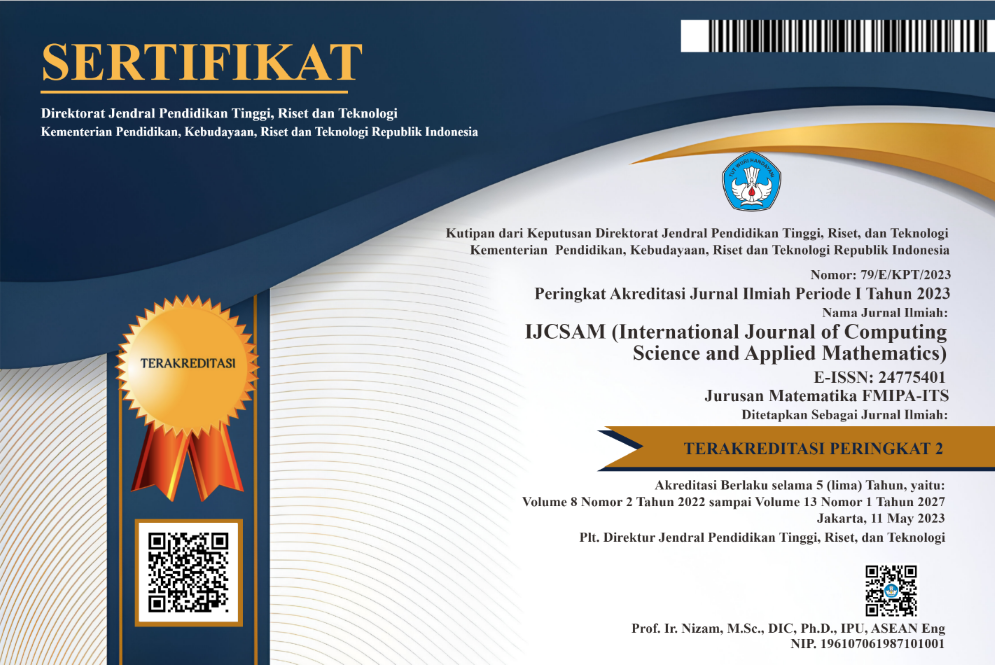Analysis Mathematical Model of Radicalization S(Susceptible) E(Extremists) R(Recruiters) I(Immunity) with Optimal Control
Abstract
Keywords
Full Text:
PDFReferences
C. McCluskey and M. Santoprete, “A bare-bones mathematical model of radicalization,” arXiv preprint arXiv:1711.03227, 2017.
R. Rahimullah, S. Larmar, and M. Abdalla, “Understanding violent radicalization amongst muslims: A review of the literature,” Journal of Psychology and Behavioral Science, vol. 1, no. 1, pp. 19–35, 2013.
E. Mulcahy, S. Merrington, and P. Bell, “The radicalisation of prison inmates: A review of the literature on recruitment, religion and prisoner vulnerability,” Journal of Human Security, vol. 9, no. 1, pp. 4–14, 2013.
H. Hethcote, “The mathematics of infectious diseases,” SIAM review, vol. 42, no. 4, pp. 599–653, 2000.
O. Tessa, “Mathematical model for control of measles by vaccination,” in Proceedings of Mali Symposium on Applied Sciences, vol. 2006, 2006, pp. 31–36.
M. Choisy, J.-F. Guegan, and P. Rohani, “Dynamics of infectious diseases and pulse vaccination: teasing apart the embedded resonance effects,” Physica D: Nonlinear Phenomena, vol. 223, no. 1, pp. 26–35, 2006.
M. Santoprete and F. Xu, “Global stability in a mathematical model of de-radicalization,” Physica A: Statistical Mechanics and its Applications, vol. 509, pp. 151–161, 2018.
A. Panfilov, “Qualitative analysis of differential equations,” arXiv preprint arXiv:1803.05291, 2018.
N. Nastitie and D. Arif, “Analysis and optimal control in the cancer treatment model with combining radio and anti-angiogenic therapy,” IJCSAM (International Journal of Computing Science and Applied Mathematics), vol. 3, no. 2, pp. 55–60, 2017.
DOI: http://dx.doi.org/10.12962%2Fj24775401.v7i2.4605
Refbacks
- There are currently no refbacks.
View My Stats

International Journal of Computing Science and Applied Mathematics by Pusat Publikasi Ilmiah LPPM, Institut Teknologi Sepuluh Nopember is licensed under a Creative Commons Attribution-ShareAlike 4.0 International License.
Based on a work at https://iptek.its.ac.id/index.php/ijcsam.






